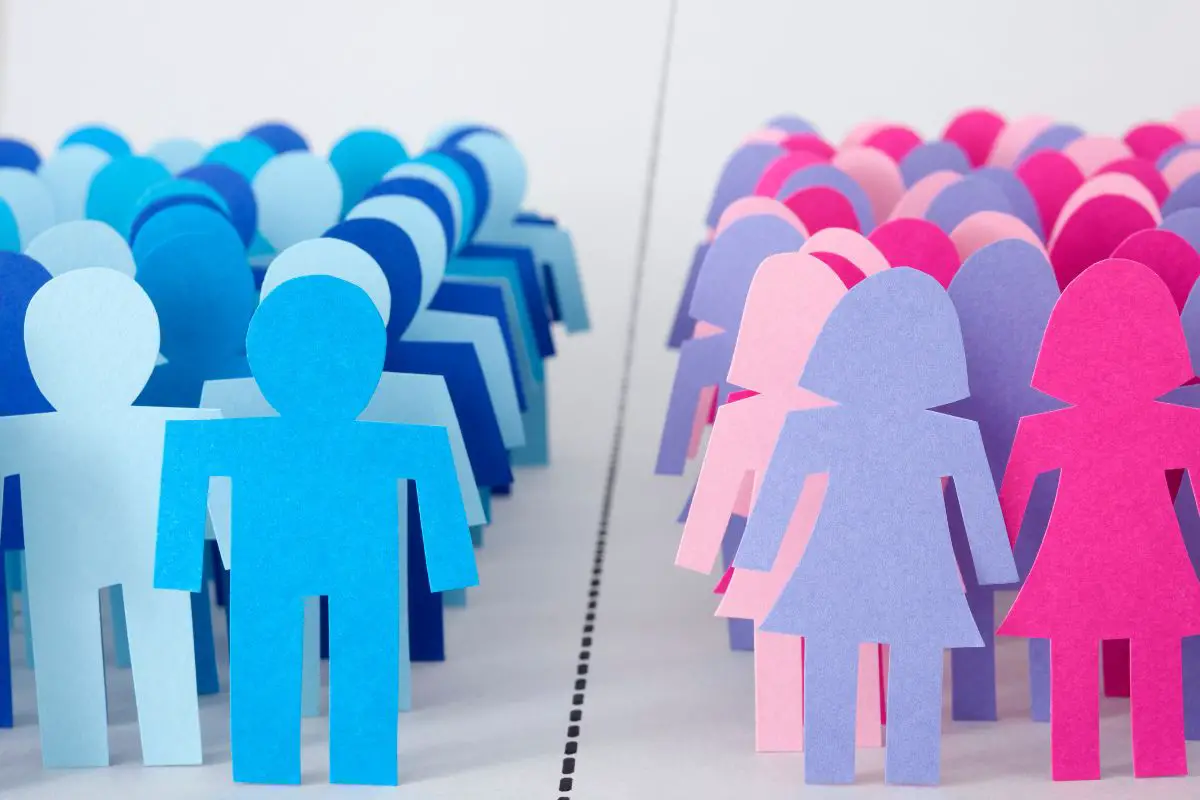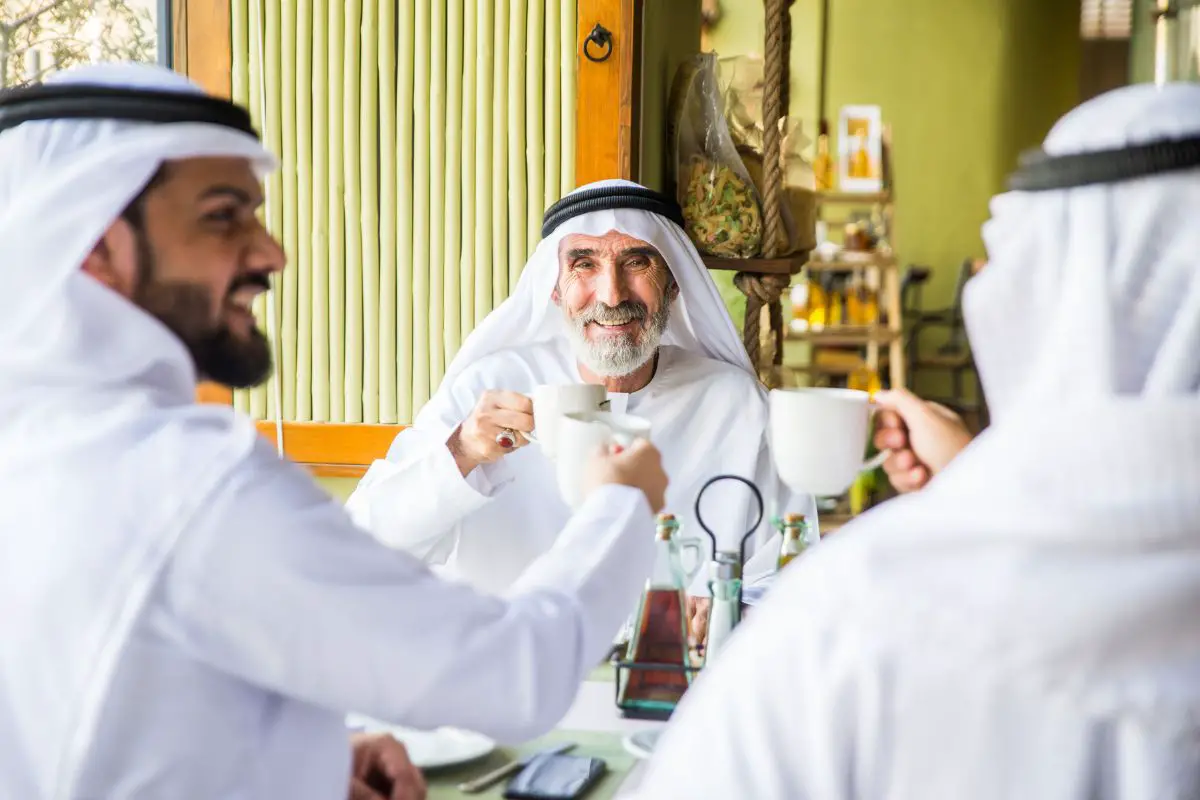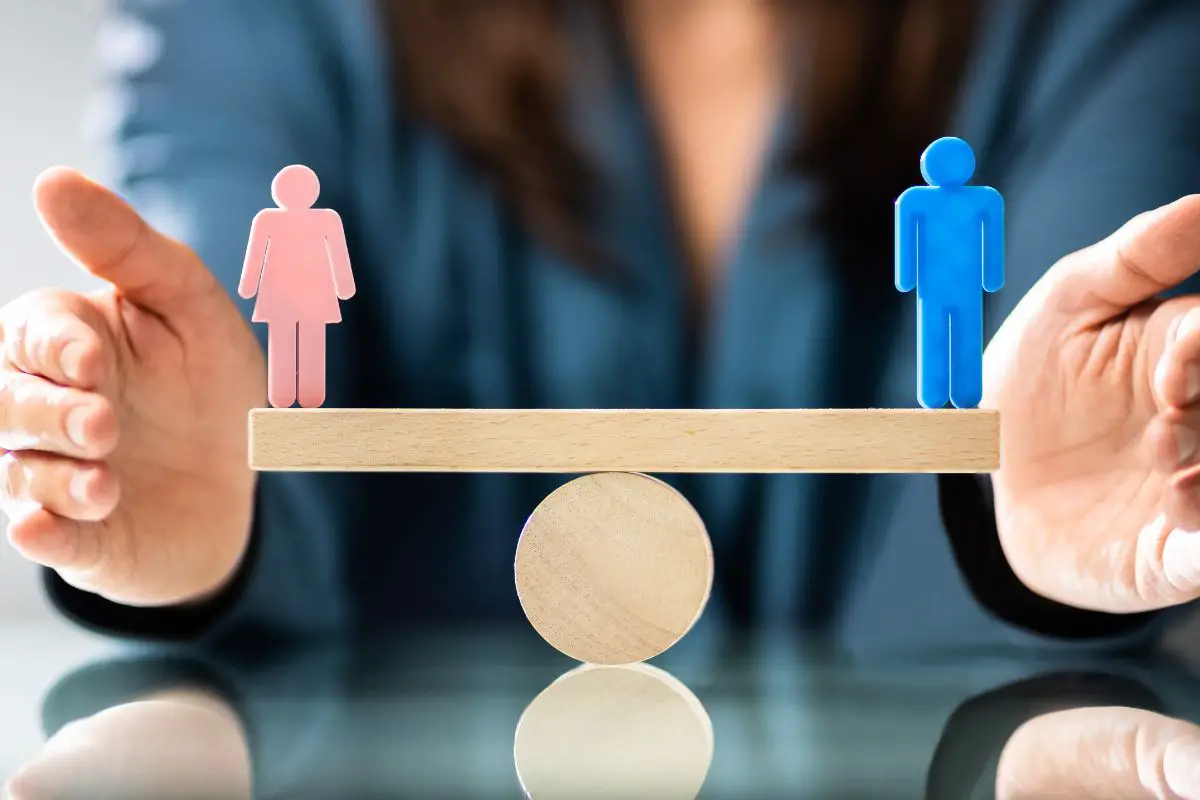In this article, the reader will gain an insight into the historical context of coffee and gender roles in the Middle East, as well as how coffeehouses played a significant role in male-centered socialization while reinforcing male dominance. The article also discusses women’s exclusion from traditional coffeehouses and their coffee consumption in domestic settings. Furthermore, it explores the influence of globalization and modern coffeehouses on Middle Eastern gender dynamics, ultimately leading to contemporary debates and conflicts surrounding coffee and gender roles in the region.

Historical Context of Coffee and Gender Roles in the Middle East
Origins and spread of coffee in the region
Coffee has a rich history that dates back to the 15th century in what would now be modern-day Ethiopia. Legend has it that a shepherd named Kaldi stumbled upon the coffee plant after noticing that his goats became energetic and sleepless after consuming the berries from a particular tree. Coffee exports began through the port of Mocha in Yemen, and the beverage spread across the Arabian Peninsula, becoming an integral element of Middle Eastern culture.
By the 16th century, coffee had reached Turkey, where it was dubbed “Kahve,” and eventually became an essential part of daily life. In the early 17th century, coffee houses called “Khave Khaneh” or “Qahveh Khaneh” began to open in cities such as Istanbul and Cairo, where men gathered to socialize, engage in political discussions, and play chess or backgammon.
As the beverage continued to gain popularity, being consumed by people of all social classes, it became an indispensable social tool. This led to an increased demand for coffee and the development of specialized professions, like the “kahveci usta” (coffee master) in the Ottoman Empire.
Social customs and coffee’s integration in daily life
As coffee became increasingly popular in the Middle East, it began to play a significant role in shaping the region’s social customs. The introduction of coffee houses provided a space for discussions and interactions, which, in turn, paved the way for the development of intellectual and artistic expression.
In the Ottoman Empire, coffee houses came to symbolize modernity, and the act of drinking coffee acquired a set of rituals and etiquettes. For example, coffee was typically accompanied by a piece of Turkish delight or a glass of water. Coffee was often served in finjan, a small cup without handles, and was poured from a cezve, a copper coffee pot with a long handle.
Coffee also played a vital role in traditional Arab hospitality. When visitors arrived at a home or business, they were customarily offered coffee, and a refusal to partake could be perceived as an insult. Coffee was also an important part of matchmaking rituals, where the prospective groom’s family would visit the prospective bride’s family, and the quality of the coffee served would be judged as an indicator of the woman’s skills and suitability.
Gender roles in the Middle East during the pre-coffee era
The gender roles in the pre-coffee era Middle East were well-defined and rigid, with a strong emphasis on patriarchal norms governing the daily lives of both men and women. Men held most authority in the family, with fathers or elder male members being responsible for the well-being and decision-making within the family unit. They were considered the breadwinners, with clear expectations to support their families both financially and socially.
Women, on the other hand, were expected to stay at home and take care of the household, being primarily responsible for raising children, cooking, and maintaining the family’s honor. There were limited opportunities for women’s education, and their roles in society were centered around the domestic sphere, with little scope to participate in public life.
Despite the patriarchal structure of society, women held a significant role in preserving traditions and cultural customs. This included the preparation and serving of coffee, which became an essential expression of hospitality and a symbol of social cohesion. In this regard, coffee culture in the Middle East contributed to the perpetuation of gender roles, as women’s involvement in coffee preparation and serving became both a cultural expectation and a means to uphold traditions.
Coffeehouses and Their Role in Male-centered Socialization
Emergence of the traditional coffeehouse culture
The emergence of coffeehouses can be traced back to the 15th century in the Middle East, particularly in modern-day Turkey, Egypt, and Saudi Arabia. During this time, coffee was viewed as a luxury item, and societies developed coffeehouses or qahveh khanehs as spaces for people to enjoy this beverage.
The first coffeehouse in Istanbul was established in 1555 (or 1554 according to some sources), soon followed by similar establishments in Aleppo, Cairo, and Medina. From the Middle East, this culture spread to Europe, and the first coffeehouse opened its doors in Venice in 1645. By the 17th century, coffeehouses became a prominent fixture in European cities such as London, Paris, and Vienna.
Coffeehouses were not only places to enjoy coffee but also centers for social and intellectual activities. During the 17th century, these establishments evolved into spaces for people to read and discuss literature, share news, and conduct business. The European coffeehouse was a male-only space, thus excluding women from accessing this important cultural domain.
However, it’s important to note that the exclusion of women was not universally the case, as some Middle Eastern coffeehouses also accommodated female customers.
Reinforcement of male dominance through coffeehouses

The traditional coffeehouses enshrined and fostered male-centered socialization by essentially catering exclusively to men. Women were typically not permitted to enter such establishments or were relegated to separate areas, effectively sustaining a gender power structure that conferred coffeehouses as masculine spaces.
The 17th and 18th-century European coffeehouses played an integral part in perpetuating gender bias, as they solidified into centers of social influence for men. These establishments became venues for male-dominated political discussions, networking opportunities, and a means of creating tight-knit social circles.
Additionally, the predominantly male clientele at coffeehouses would often discuss social issues and politics, which reinforced patriarchal perceptions and shaped public opinion. Such a stronghold on social and political discourse limited women’s opportunities to influence public opinion and contribute to the ongoing conversations of the time.
Influence of coffeehouses on male social and political connections
Coffeehouses provided the ideal atmosphere for fostering social and political connections among their male patrons. In fact, coffeehouses were known as “penny universities,” since for the price of a cup of coffee, one could avail oneself of the shared intellectual discussions and establish connections with prominent figures.
Several key cultural, political, and intellectual movements, such as the Enlightenment, had their roots in coffeehouse conversations. These establishments served as breeding grounds for the dissemination of new ideas and facilitated collaborations among like-minded individuals. The exclusion of women from this environment effectively barred them from participating in evolving intellectual networks and shaping the direction of these vital movements.
Coffeehouses also played a pivotal role in fostering men’s business connections; many early stock exchanges and insurance companies originated in coffeehouses. For example, Lloyd’s of London, the world’s leading insurance market, began as a coffeehouse where merchants and ship captains congregated to discuss business matters. Similarly, the London Stock Exchange emerged from a coffeehouse known as Jonathan’s, which specialized in serving traders and brokers.
By providing a masculine space for intellectual discourse, political debate, and the establishment of businesses, coffeehouses entrenched male-centered power structures, further contributing to the exclusion and marginalization of women who were denied access to the opportunities those spaces conferred.
Women’s Exclusion and Domestic Coffee Consumption
Women’s limited access to coffeehouses
During the Ottoman Empire, coffeehouses played a significant role as social gathering places for men to discuss and share news, politics, and art. However, women were largely excluded from these public social spaces due to cultural norms and societal expectations surrounding gender roles. Women’s exclusion from coffeehouses further reinforced their marginalization in public life and decision-making, leaving them limited opportunities to engage in discussions and influence policy issues.
In many Middle Eastern societies, traditional gender norms held that women’s roles were primarily domestic, including managing the household and raising children. Women were not expected to participate in public gatherings or engage in conversation related to politics, as these matters were seen as reserved for men. Consequently, women’s access to coffeehouses was heavily restricted or outright denied, making it virtually impossible for them to be part of intellectual conversations or develop connections with those who influenced society’s decision-making.
Coffee consumption in the privacy of homes
As women were barred from participating in coffeehouse culture, they resorted to consuming coffee within the private sphere of their homes. This led to the expansion of coffee consumption beyond public spaces, fueling demand for coffee beans and contributing to the rise of coffee trade routes and markets. The taste for coffee soon extended to women across class divides, as it became a staple in Middle Eastern households for daily use and entertaining guests.
In the domestic domain, coffee served as a means for women to foster social connections and foster camaraderie among friends, family, and neighbors. The private consumption of coffee allowed women to evade societal restrictions placed on them in public spaces, providing them with an avenue for nurturing relationships, exchanging information, and offering mutual support in challenges they faced.
Female networks and coffee socialization behind closed doors
Women’s domestic consumption of coffee enabled the development of female-centered networks rooted in cooperation and support. Women would often gather in private homes to share coffee and conversation, allowing them to build stronger social bonds and exchange ideas. Though their gatherings were limited to the domestic sphere, women still managed to create spaces for networking and knowledge exchange within their homes. These informal networks of female kinship and friendship fostered personal growth, creativity, and intellectual stimulation in a society that restricted women’s participation in public life.
In some cases, women’s coffee gatherings became a form of resistance against patriarchal norms, as they challenged conventional expectations about women’s roles and the types of social spaces they could inhabit. Through private coffee socials, women fostered relationships and engaged in conversations that could subvert strict gender norms and traditions.
Globalization and Coffee’s Influence on Middle Eastern Gender Dynamics

Influence of Western coffee chains on public socialization
The arrival of Western-style coffee chains in the Middle East in recent decades has had a considerable impact on the region’s social dynamics and gender relations. Companies like Starbucks, Costa Coffee, and Caribou Coffee have established a strong presence across the region, introducing gender-neutral spaces for conversation and connection. By offering a setting where both men and women can enjoy a cup of coffee together, these chains have challenged traditional gender norms and expectations about public social spaces.
Shifts in gender norms in modern coffeehouses
In many Middle Eastern societies, the importance of third places—locations outside of the home and workplace where people come together to socialize—is increasing. Modern coffeehouses now serve as third places for both men and women, as they navigate evolving gender roles and expectations. These establishments provide a more inclusive environment, presenting opportunities for women to break away from the confines of the home and engage in public life.
As women become more visible in public spaces, they are afforded the same opportunities as men to foster connections, network, and contribute to intellectual and political discourse in their communities. This shift in accessibility to coffeehouses signifies a broader transformation in societal perspectives on gender roles and public space.
Coffee as a catalyst for social change and gender equality
Although coffee’s role as a driving force for gender equality might not be immediately apparent, its impact on the Middle East’s public spaces has played a notable part in reshaping societal norms and expectations. Coffee has consistently fueled socialization, creativity, and change, providing a backdrop against which both men and women can flourish and connect with one another.
By transforming the nature and accessibility of coffeehouses, shifting societal attitudes towards gender and public space, and contributing to the growth of female-centered networks, coffee has played a critical role in fostering social change and supporting the pursuit of gender equality in the Middle East. Today, cafes remain an important space for individuals of all genders to come together, engage in conversation, and build a more inclusive future.
Contemporary Debates and Conflicts Surrounding Coffee and Gender Roles
In recent years, the coffee industry and coffee culture have faced numerous debates and conflicts surrounding the topic of gender roles, particularly in traditionally patriarchal societies. As the global landscape of coffee culture shifts to incorporate more gender inclusiveness and equality, it is essential to examine contemporary debates and conflicts within this context to better understand the impact of these changes on different communities.
Enduring patriarchy and traditionalist backlash against coffee-related gender equality
In many Middle Eastern and North African countries, coffee culture has been traditionally viewed as a male-dominated space. These societies generally adhere to conservative norms in which women are expected to serve and cater to men and are rarely seen in public settings such as coffee shops. However, as the global coffee industry embraces gender equality and women’s rights initiatives, many individuals in these regions are rejecting traditional gender norms, leading to considerable cultural tension.
For example, in Saudi Arabia, the recent opening of several co-ed coffee shops has been met with a mix of enthusiasm and resistance. While some patrons welcome the opportunity to visit establishments that encourage social interaction between men and women, others feel threatened by this change and contend that it violates traditional values. This backlash underscores the deeply ingrained resistance to gender equality in certain segments of Middle Eastern society.
Impact of regional political and social transformation on coffee culture
The political and social landscape in the Middle East has been experiencing tumultuous transformation over the past several years, with an impact on various aspects of daily life – including coffee culture. The Arab Spring and subsequent upheaval in many countries brought issues of gender equality and representation to the forefront, sparking heated debates and discussions on how to best incorporate women and feminism into society’s mainstream.
As a result, changes in coffee culture began to take shape, with more women entering the workforce, owning and managing cafes, and actively participating in coffee events. Additionally, cultural barriers that once prevented women from frequenting coffee establishments began to wane, allowing for an influx of women into these previously male-dominated spaces.
However, this shift towards inclusivity has not been without its challenges, as instances of harassment and abuse towards women in the coffee industry have garnered media attention. This highlights the ongoing struggle for gender equality in the region and the necessity to continue advocating for women’s rights and representation.
Potential for coffee to contribute to the future of gender equality in the Middle East

Despite the current challenges surrounding gender roles in the coffee industry, there is a silver lining that suggests a brighter future for gender equality in the Middle East’s coffee culture. The global focus on gender inclusivity in the industry has prompted many coffee producers, retailers, and consumers in the region to question traditional values and customs, leading to increased dialogue and openness surrounding the topic.
Furthermore, organizations like the Specialty Coffee Association (SCA) have taken steps to address gender disparities by implementing programs, such as the SCA’s Women in Coffee program, aimed at empowering women in the global coffee industry. In the Middle East, local women-centered initiatives are also gaining traction, helping women break into the industry and become successful entrepreneurs.
Moreover, as more women in the region become involved in the coffee industry and take on leadership roles, this will not only help challenge traditional gender norms but also create new opportunities and economic empowerment for women in the process. This change could drive broader social transformation and contribute significantly to the ongoing struggle for gender equality in the Middle East.
In summary, the contemporary debates and conflicts surrounding coffee and gender roles in the Middle Eastern coffee culture provide a critical lens through which we can understand the impact of shifting global values on traditional societies. As the coffee industry moves towards greater gender equality and inclusivity, it will continue to play an important role in shaping the future of gender dynamics and women’s empowerment in the Middle East.
FAQs on Coffee’s Impact on Gender Roles in Middle Eastern Society
1. How has coffee played a part in shaping gender roles in Middle Eastern societies?
Coffee has historically influenced gender roles through coffeehouses, which were initially male-dominated spaces for social gatherings, political discussions, and cultural events in the Middle East. Women, however, eventually gained access to these spaces and influenced the sociocultural dynamics.
2. Has the role of coffee in Middle Eastern societies changed over time?
Yes, the role of coffee has evolved as Middle Eastern societies have transformed. With changing perceptions on gender equity, coffeehouses have become more inclusive, allowing women to socialize, work, and even own such establishments, contributing to advancements in gender equality.
3. In what way does the Middle Eastern coffee ceremony contribute to gender roles within the community?
The coffee ceremony, traditionally led by women, reflects the importance of women’s roles in hospitality while showcasing their skill and creativity in coffee preparation. This tradition contributes both to women’s agency and to the reinforcement of specific gender roles in society.
4. Are there differences in coffee consumption habits among men and women in the Middle East?
Over time, the consumption habits have become more similar, with both genders enjoying coffee at home or in public spaces. However, some cultural practices and preferences remain, such as women’s distinct roles in traditional coffee ceremonies.
5. How does the contemporary specialty coffee movement affect gender roles in the Middle East?
The contemporary coffee movement has opened doors for both women and men to become entrepreneurs, baristas, or roasters, challenging traditional gender roles. This movement also encourages more inclusivity in public spaces and fosters the empowerment of women within the industry.
6. Are there any gender-specific customs or traditions in Middle Eastern coffee culture that still persist today?
While some customs remain, such as the traditional coffee ceremony led by women, these practices continue to evolve in response to social changes. The emphasis on hospitality and togetherness now transcends gender, as both men and women actively participate in various aspects of coffee culture.